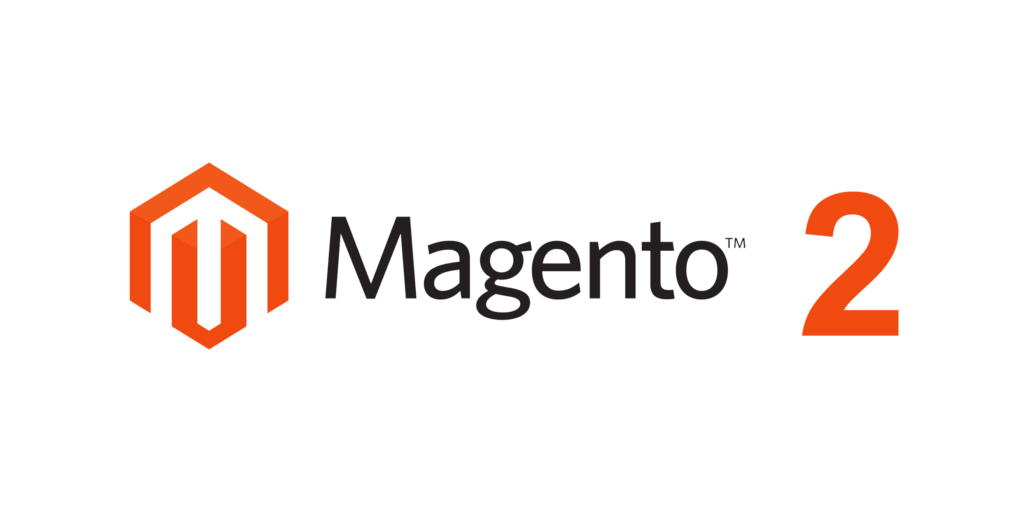Are you thinking about setting up an online store? Or maybe you already have your own store but you are not satisfied with the solution you have and are looking for an alternative? You’ve come to the right place! In this article, we will describe all the most popular e-Commerce platforms in Poland and compare them in several respects. These will be: Entry threshold, Service, Integrations, Speed of operation, Scalability and Customization.
We invite you to read!
Table of Contents
- Which platforms do we use most often in Poland?
- WooCommerce – The most popular online store platform in Poland.
- Shoper – The most popular SaaS solution in Poland.
- PrestaShop – The second dedicated most popular e-Commerce solution in Poland.
- Magento2 – A scalability monster for stores with great ambitions.
Which platforms do we use most often in Poland?
First, some data:
According to BuiltWith, the most popular solution in Poland is WooCommerce, which is used by 23,496 e-Commerce stores in Poland. Second place goes to the PrestaShop platform, which has 20,537 online stores. The third place on the podium is taken by SaaS Shoper, a Polish solution that is definitely the easiest to start with, and it has 17,854 stores in Poland. Then we have Wix Stores which will not take part in this test, then we have TakeDrop, which is a platform for rather beginner Dropshippers, only then we have IdoSell which we have not had any contact with so unfortunately it will not take part in this test, although the post will certainly be updated when we learn about the possibilities this platform. Only then do we have Shopify, famous in the USA, and a few places further, Magento2. Does the most popular mean the best? Let’s check it!
Platforms that took part in the test: WooCommerce, PrestaShop, Magento2, Shoper and Shopify.
Choosing an e-Commerce platform is a problem faced by every entrepreneur who starts selling online. I will try to explain the choice of platform to you once and for all, so that you can finally calmly say to yourself “I made a wise choice”. I invite you to read.
Alex Godlewski – Founder of Astrone
WooCommerce – The most popular online store platform in Poland.

Admission word.
ChatGPT
WooCommerce is a popular and extensive e-commerce system based on WordPress. It is a platform that allows you to create and manage online stores. WooCommerce is extremely flexible and allows you to adapt the store to the individual needs and expectations of users. It includes a range of features such as payment processing, order and delivery management, tax handling and much more. It is a good choice for people who want to have full control over their store and are looking for an extensive tool to manage their e-commerce activities.
The teraz of the rzeczy.
Entry Threshold:
In WooCommerce, the entry threshold is not the easiest – you need to buy hosting, install and configure WordPress, then choose a theme and configure your online store. And this is where the stairs begin.
Configuring themes is not the easiest thing, especially for users who just want to sell. The process of starting sales and configuring everything will not be idyllic for a user who is just starting his adventure with e-Commerce. Yes, even if he manages to build the store, it may turn out that he has made so many mistakes that at some stage it will be more profitable to build the store from scratch than to repair it by professionals.
If you choose WooCommerce, it is better to leave the creation of the store to specialists who deal with WooCommerce on a daily basis. They know the solutions that should be prohibited and those that are effective and allow for easy and pleasant development of the store in the future.
Does this mean that I can’t set up a WooCommerce store myself? Absolutely not! The problem with WooCommerce is that it offers so many possibilities for a layman that he can “cloud” the store in a very simple way. Not to mention paid “GPL” solutions that can infect your website with various malware.
Entry Threshold – Rating: 5/10
A store for a layman is not the easiest thing, but for an experienced Wordpress + WooCommerce user, setting up a store on this platform will be idyllic. Therefore, the assessment cannot be different.
Service:
WooCommerce is rather simple to use. With a properly built theme, everything will be easy, light and pleasant, regardless of what types of products we sell. Ordering, analyzing statistics, and adding products and categories is very simple. The situation with technical support is worse. Here we sometimes have to be careful with each plugin update because it may not be compatible with another one. Therefore, it is good to have a specialist at hand who will help in repairing errors resulting from ill-considered updates.
You also need to take into account that a lot depends on the theme you use or the type of products you sell. It may turn out that our products are so specific that if we want to display additional fields, we will need the help of a programmer. Order processing itself is quite simple thanks to many integrations such as Parcel Lockers or Returns directly from the panel.
Service – Rating: 6/10
Handling orders is a simple matter, here the rating could easily be 8/10, but points must be subtracted for technical service, where specialist service is often indispensable.
Speed of action:
We are walking freely and suddenly we come across muddy ground… How can you describe the speed of operation when one client clicked on the theme himself and the website sometimes takes 15 seconds to load, while the other client left it to specialists and his website loads after 0.5 seconds? We are unable to answer this question, so we will take a case where the store was built properly. We also ask you not to confuse scalability with speed.
In short, if the website has been properly prepared and is hosted on the appropriate server, it will run very smoothly. Even with Elementor, our store can achieve scores of 90+ in PageSpeed and Grade A in GTMetrix. We also had a case where we managed to optimize the website from 10 to 90 using many tricks, but it is still possible.
Rating: 9/10
We assume that the store was built above average. With the right theme and cache, the speed will be good. Much here depends on technical solutions, so it should be taken into account that not every store will work quickly.
Integrations:
In this case, WooCommerce is second to none. Includes integrations for virtually everything. There is no point in writing too much here, because whatever you come up with is probably already integrated. Przelewy24? Is PayNow? Is Parcel lockers? Are Or maybe aPaczka? Is. Newsletters? Are WooCommerce simply has everything mostly free.
Rating: 10/10
It can’t be any different here. WooCommerce has mostly free integrations for everything. End. Dot.
Scalability :
We are entering even more muddy ground, ladies and gentlemen!
Scalability in WooCommerce is an issue that has been going on for many years. WooCommerce is constantly improving, but a lot still depends on who and how the store was created. Much will also depend on hosting. Let’s assume that we have entrusted the store to specialists to create, we have all the store functions such as: Category filtering, search engine, wish list and many others. WooCommerce will need a lot of resources and good solutions such as Caching or ElasticSearch. If our specialists are real specialists, they should implement these solutions as the store develops. The problem, however, is still encoded somewhere in the Core of WooCommerce itself. For example, the loading basket element is loaded on every subpage, which can significantly slow down our system. Caching of individual elements for the client does not exist either. When our store grows, a WooCommerce specialist is not enough, we will need an ultra-specialist who will code our solutions so that the cost of servers does not eat up our revenues.
Rating: 8/10
Nevertheless, we consider WooCommerce to be a very scalable platform. In the case of a well-created WooCommerce store, it can be scaled almost infinitely. It certainly won’t beat Magento2, which requires us to install ElasticSearch by default. WooCommerce scales gradually. We start without scaling, and over time, as our store grows, we implement solutions that allow us to scale the store. We then avoid large start-up costs, and in the future, when the store makes money, we can develop it appropriately.
Customization :
In WooCommerce we can change everything. If someone insists that their panel should look the way they want, their panel will look the way they want. Additionally, most things can be edited using editors such as Elementor or Gutenberg. It may be more difficult to customize the order page or the my account page, but that’s what programmers are for.
Rating: 9/10
With a well-made theme, the store owner can change individual elements of the website in a simple and transparent way, even without the help of a programmer. Some elements will require a programmer, so I took away one point. At the end of the day, you can change anything in WooCommerce any way you want.
Summary:
WooCommerce is the perfect middleware platform. It’s great for selling 1 product a day, and it’s great for selling 1,000 products a day. If you want to start and immediately have the opportunity to develop for the future. Select WooCommerce. If you don’t have a budget and you want to start selling here and now and you don’t have any programming knowledge, choose what I describe below.
Shoper – The most popular solutions

Once again, we give the floor to the famous ChatGPT, what does it have to say about Shoper?
Shoper is a platform for running online stores that offers a number of tools and functionalities that enable running an e-commerce business. Its main advantages include a quick and easy-to-use tool for creating stores, wide integration possibilities with other applications and systems (e.g. payment systems, warehouse management systems), as well as rich functionality in the field of store management, including: incl. product, order, customer and promotion management. Shoper also offers extensive online marketing tools, such as the ability to create e-mail marketing campaigns and integration with remarketing tools. The platform is available in a subscription model, and the price depends on the selected functional package and the number of products in the store.
– ChatGPT
We thank the chat and vote for the studio!
Entry threshold:
Shoper allows for the easiest entry threshold of all the platforms we will describe today. You click start, fill in all the data and you are ready to start. The shopper definitely wins in this respect. If you want to start selling quickly and easily, this should be your choice.
Entry Threshold – Rating: 10/10
Service:
Shoper is also very easy to use, a problem may arise when we start selling slightly non-standard products. Then you will have to fiddle a bit, but in the end it will turn out that shoper is one of the easiest to use store platforms.
Service – Rating: 9/10
Speed of action:
Let the fun begin, ladies and gentlemen! Shoper is not one of the fastest platforms that exist. We don’t have many options to optimize our store here, practically everything depends on the theme. If we have a well-written theme, everything should be fine, but if the theme is written poorly, there is nothing we can do about it. Various integrations also influence this.
Rating: 5/10
None of the stores I tested (I tested 10) achieved the required results in Core Web Vitals, although they were not far behind. However, most stores with the famous Google Page Speed of 20 are simply unacceptable.
Integrations:
Shoper has many Polish integrations, unfortunately most of them are paid for a monthly subscription. If there is no integration, well… There’s nothing you can do, you have to look for something else. Therefore, when building a store on Shoper, it is worth considering first what tools we will use (we do it in our strategic workshops before building the store), and only then consider whether Shoper is really a good choice.
Rating: 4/10
Scalability:
To start with, the shoper provides good scaling tools – we get two servers to which we just need to connect Load Balancer from Cloudflare (we recommend it!) and our store will run quite smoothly. Unfortunately, as customers grow, it may turn out that this is not enough. What are we left with then? The Enterprise plan, which rightly has a “starting” price written at the beginning.
Rating: 5/10
Customization :
Many stores on Shoper look very similar, customization is very limited. Even in the case of a programmer who spends many hours on the store, it may not necessarily be possible to edit all the elements in accordance with our graphic design. Here, the shopper will definitely lose to dedicated platforms. However, it will win against Shopify.
Rating: 4/10
Summary:
Shoper is definitely the best solution to start with. You can start selling almost immediately without a large financial investment. Problems may begin when your store grows. Shoper may then turn out to be an insufficient tool to increase conversions, speed up the store or accommodate a larger number of customers.
So when should you choose Shoper? When you want to test your business idea and start selling. Once you hit it and have a budget, we suggest moving to another platform.
PrestaShop – The second dedicated most popular e-Commerce solution in Poland.

We give the floor from the studio to our increasingly better friend Chat GPT:
PrestaShop is open software for online stores that allows you to create and manage an online store without the need for specialized technical knowledge. The platform is available in many languages and offers a wide selection of templates and plugins that allow you to customize the appearance and functionality of your store to your individual needs. Editing the appearance in PrestaShop may vary in difficulty depending on your knowledge and experience with editing templates and HTML/CSS code. Generally speaking, the available tools and configuration options should allow the user to customize the appearance of the store to their own preferences, but more advanced changes may require more knowledge or specialist help.
– ChatGPT
Thank you, and now let’s move on to more important things!
Entry threshold:
Prestashop, despite what ChatGPT says, does not allow you to run it without specialist knowledge. The entry threshold here will be much more difficult than in the case of Shoper, and even more difficult than in the case of WooCommerce. If you want to start on your own and focus on PrestaShop, it’s better to give up because you will sooner become a PrestaShop specialist than an e-Commerce store owner.
Entry Threshold – Rating: 3/10
Service:
Once specialists have set up a Prestashop store, it turns out that the operation is quite simple. We have all the advanced store functions and tools that allow us to natively do things that would require additional integration in Shoper or WooCommerce. The operation is very simple and also allows you to handle larger numbers of orders, as well as sending parcels from the panel or refunding payments. Presta definitely deserves extra points for service. The situation is worse if we want to edit simple things on the front end. Here, it’s hard to find an intermediary like Gutenberg on WooCommerce or Elementor. You may need help from a programmer.
Service – Rating: 7/10
Speed of action:
Again, everything depends on what our PrestaShop specialist has done. If he did it in a proper and specific way, our store will be very fast. If our specialist clicks something, it may turn out that something is very wrong. Unfortunately, ready-made themes in PrestaShop are rather slow. The solution here to ensure good speed is to create a dedicated theme that costs money.
Rating: 5/10
By nature, PrestaShop stores are slow because they are built by specialists who do not really know what they are doing. Ready-made themes are also free. Everything here must be put in the hands of a specialist. But when we take the store as it should be, it turns out that PrestaShop is very fast. Taking a few random stores into consideration shows that PrestaShop stores very rarely have basic Google metrics. The speed on mobile is usually around 50 points.
Integrations:
Like WooCommerce, PrestaShop has many integrations with Polish suppliers. We don’t have that many integrations, but there are a lot of them. Their price may be a problem, because Presta integrations are often much more expensive than WooCommerce integrations.
Rating: 8/10
We subtracted one point for the price of plug-ins and the other for their quantity. In WooCommerce, the choice is definitely larger and cheaper.
Scalability:
PrestaShop has all the possibilities of scaling the store to large sizes. Due to the fact that the platform is a dedicated store and not a Wordpress plug-in, some elements will scale better. Scaling again as in the case of WooCommerce may require additional solutions and strong hosting. However, a lot is possible with PrestaShop in terms of scalability and it deserves to be scaled.
Rating: 9/10
Customization :
We probably won’t edit Presta ourselves. You will need a PrestaShop specialist. Only he is able to implement the full design of each element that we received in our dedicated design. Since you can change anything you want, but it requires a programmer, we give it a notch less than WooCommerce.
Rating: 7/10
Summary:
PrestaShop is a solution similar to WooCommerce. At first glance, its advantage may seem to be that it is a dedicated store platform, it has many integrations at higher prices than WooCommerce and in smaller quantities. Its advantage is better scaling of some store elements, such as variants, compared to WooCommerce, which can be bypassed in Woo with an appropriate technique. Ultimately, I don’t see much reason to choose Presta over Woo. More expensive and less choice of integrations, similar functionalities, fewer editing options, similar scalability, both will require a programmer if we want them to be done well.
If you have a well-built PrestaShop store and are considering switching to something else. Stay with the presta. However, if you are considering Presta, WooCommerce or… seems to be a better solution. Magento2, more on that in a moment.
Magento2 – A scalability monster for stores with great ambitions.

Chat, how do you use Magento2?
Magento 2 is a popular e-commerce system that is especially recommended for large online stores with extensive functionality. It has extensive personalization and integration possibilities with other tools, and also ensures high scalability and performance. However, due to its technologically advanced nature, Magento2 may be more difficult to use for people with limited programming experience or without adequate technical knowledge. It also often requires greater financial outlays for hosting and maintenance, but this is a cost that can be profitable for large and dynamically developing online stores.
– ChatGPT
Thank you, we already know the basics about Magento2 and now let’s move on to the summary.
Entry threshold:
Magento2 has by far the most difficult threshold to enter the market. If you are starting without a large budget, skip Magento2. We know, you’re probably thinking, “What if I develop quickly?” What if you don’t have enough space in your garage for your third Ferrari? It’s not really a problem for now, so… Skip Magento2 if you are a beginner. However, if your ambitions and budget are sky high, and you are sure that you will achieve huge sales very quickly, Magento2 is probably your only choice.
Entry Threshold – Rating: 2/10
Service:
Once a team of experienced programmers have set up a Magento2 store, it’s time for service. It is quite simple, of course depending on what the programmers gave us, but after the initial difficulties with learning Magento2, it may turn out that it is not as scary as painting it.
Service – Rating: 7/10
Speed of action:
As usual. It all depends on how the programmers built our theme. If they used solutions that comply with the rules, you will receive a fast-functioning store. If not, well… All that remains is to look for those who will do it well 😉 I also took into account several very popular stores in Poland and unfortunately none of them meets the basic Core Web Vitals indicators, and moreover, their results on mobile are around 10 points out of… 100.
Rating: 5/10
Integrations:
Magento2 like Woo or Presta have their own marketplace with plugins. Of course, with scale comes price. Magento2 has the most expensive plugins and the smallest number of them. Sometimes it may turn out that something will need to be codified and the cost may be quite high. If you only need basic integrations such as payments or parcel lockers, you should be able to handle it easily. If you are looking for something more niche and non-standard, it suddenly turns out that you have to pay a good amount of money to code a given solution.
Rating: 6/10
Scalability:
The biggest advantage of Magento2. Currently, the Adobe system does not even allow us to install it without ElasticSearch. Magento2 is certainly the most scalable dedicated e-Commerce platform that exists. There is one problem. When you scale so well that one database is not enough, you need Adobe Commerce to connect another one. But before that happens, strong hosting should be enough. If the most important thing for you is scalability, choose Magento2.
Rating: 9/10
Customization :
In Magento2, developers can practically implement any design designed by a graphic designer. If you want to edit something yourself, it may prove problematic. In the case of Magento2, your team should manage and edit the store.
Rating: 6/10
Summary
Magento2 is the worst choice if you are just starting, and the best if you are starting with a huge background and the goal of drastically fast development of your online store. Magento2 is supported by platforms such as e-Obuwie and Intersport. If you have facilities of a similar scale and are ready to conquer the world, choose Magento2.





